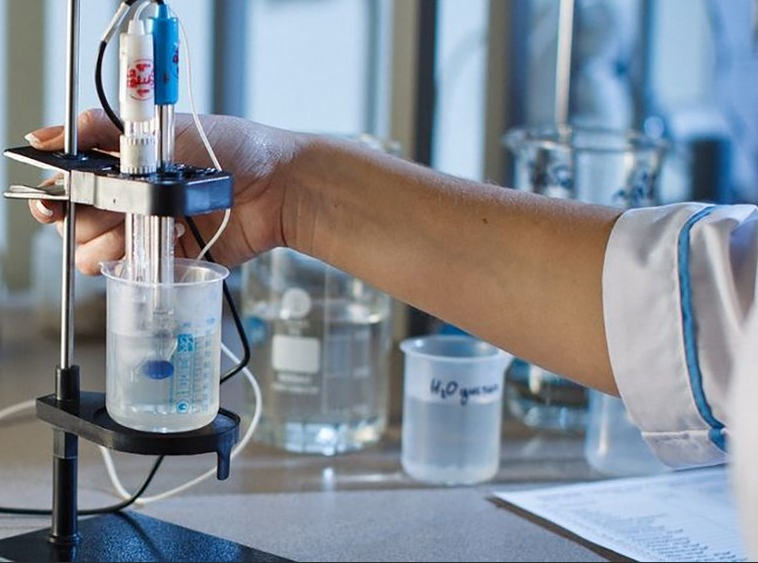There are many detection methods for total chlorine and free chlorine in water, and the commonly used methods are spectrophotometry, titration method and electrode method. Among them, the operation steps of spectrometry and titration have been introduced to you. Today, we will talk about the steps of electrode method to determine total chlorine and free chlorine in water quality.

Detection principle
The working electrode group contains two working electrodes, which are used for the detection of free chlorine and total chlorine respectively. The free chlorine electrode is coated with tetramethylbenzidine. After a fixed voltage is applied, free chlorine undergoes a reduction reaction on the surface of the working electrode to obtain electrons and generate current; the total chlorine working electrode is coated with potassium iodide, which promotes the addition of combined chlorine to the reduction reaction. Gain electrons and generate electric current. During the measurement, the working electrode group is inserted into the water sample to be tested, a fixed working voltage is applied to the working electrode through a voltage stabilizer, and the relationship between the current and the electrification time generated thereby is recorded in real time. The intensity of the current generated is proportional to the concentration of free and total chlorine in the water sample.
Common disturbances during detection
Chlorine dioxide will undergo a similar reduction reaction with chlorine on the surface of the working electrode, which will interfere with the detection of chlorine. However, chlorine dioxide itself is highly volatile and can be removed by blowing off the water for 5 minutes. The acceptable pH range for water sample detection is 4-9. Too high or too low pH will affect the detection.
Test reagents and equipment
1. Sodium hydroxide solution: 2.0mol/L
Weigh 80g of sodium hydroxide and dissolve it in 500ml of laboratory first-grade pure water. After the solution is cooled, transfer it into a 1000ml volumetric flask, add pure water to the mark, and mix well.
2. Laboratory first-grade pure water
3. Portable Electrochemical Chlorine Analyzer
Including free chlorine working electrode, total chlorine working electrode, reference electrode and counter electrode, etc.
Water quality testing equipment should meet the following requirements
working environment:Ambient temperature, 0℃-50℃; Ambient humidity, ≤90%.
The instrument should have temperature compensation function.
Accuracy performance:
Free chlorine: ≤±0.05mg/L, 10±0.05mg/L (20℃); ≤±2mg/L, 20±2mg/L (10℃).
Total chlorine: ≤±0.5mg/L, 10±0.5mg/L (20℃); ≤±10mg/L, 200±10mg/L (10℃).
Water Sample Collection Precautions
Free chlorine and total chlorine are unstable, and water samples should be measured on site as much as possible. If the water sample cannot be measured on site, it is necessary to add 1% NaOH solution of the sampling volume to the brown glass bottle in advance, collect the water sample to fill the sampling bottle, and seal it immediately to prevent the water sample from contacting the air. If the water sample is acidic, the amount of NaOH solution should be increased to ensure that the pH of the water sample is >12. In addition, the turbidity and chromaticity of the water sample have no influence on the determination and can be directly determined. The temperature of the water sample should be between 2°C and 35°C. The water samples were stored at 4°C and protected from light and measured within 5 days.
Detection steps
Before testing, correctly connect the working electrode group and the measuring instrument to check the performance of the instrument. When testing blank water samples, the measured value should be less than the detection limit of the method. Adjust the pH of the water sample to 4-9, rinse the measuring cup with the water sample, and measure the water sample to the mark. Select the free chlorine and total chlorine measurement items on the instrument, insert the working electrode group of the water quality detector into the water sample, and read after it is stable. After the measurement is completed, discard the water sample, clean the measuring cup, turn off the power and end the measurement.
The concentration of free chlorine and total chlorine can be directly read from the display screen of the instrument (calculated as Cl2). If the water sample is diluted before measurement, the free chlorine and total chlorine concentrations should be the direct reading results multiplied by the dilution factor. The combined chlorine concentration in the water sample can be calculated according to the formula C3=C2 (total chlorine concentration) - C1 (free chlorine).



